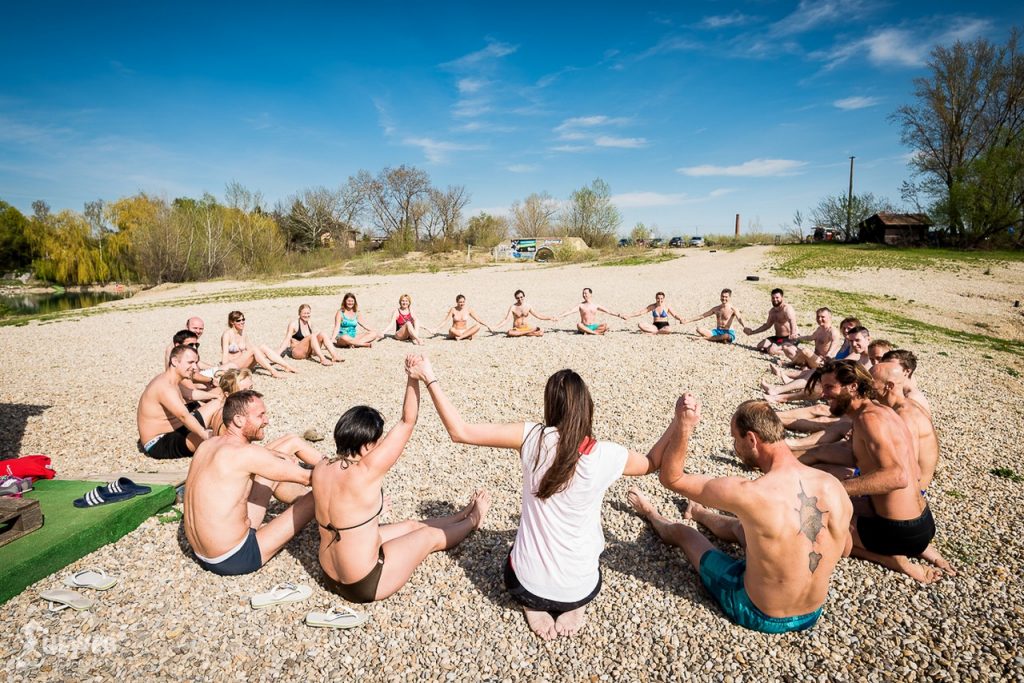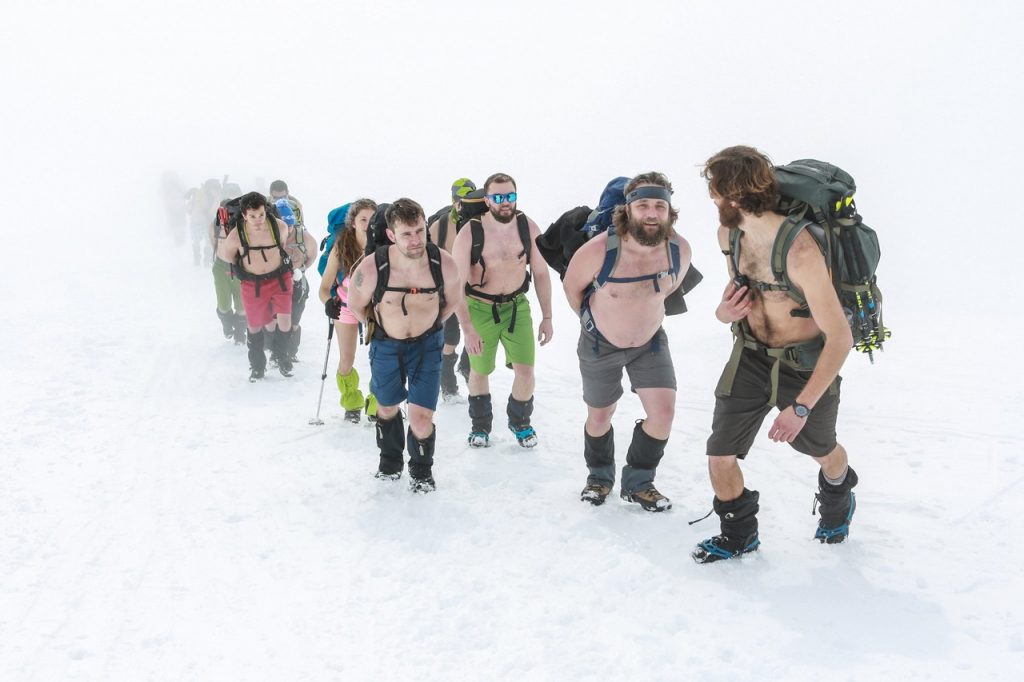The heat and the cold are two opposites which accompany us through our lives. Some people might think that the winter is too cold, for other people the heat is too hot. Let‘s try a different point of view and learn what is happening in our body… and find out how, if possible at all, to work with the perception of the cold and the heat…
Even though I have decided to dedicate this part of the blog to those who love the cold and the Wim Hof method, hopefully other people who love heat will find the information useful too :-)…
Perception of heat and cold…
Is there comfort and discomfort for the human body???
The body is a very complex mechanism which is able, through its senses, to perceive and process various stimuli which come from its surroundings. One of the most perceptive organs which contains a large number of sensors is our skin.
The skin is able to perceive thousands of stimuli at every moment without us being aware of it. What will be of particular interest to us is the ability of our body to recognize the heat and the cold and to monitor temperature changes. Most of us would think that it is easier for us to perceive the rise in temperature and react to it faster and better than to the influence of the cold. Evaluating temperature changes we perceive, whether it is cold or hot, is a combination of signals which our brain receives from body sensors and the way they are evaluated in specific centres in the brain.
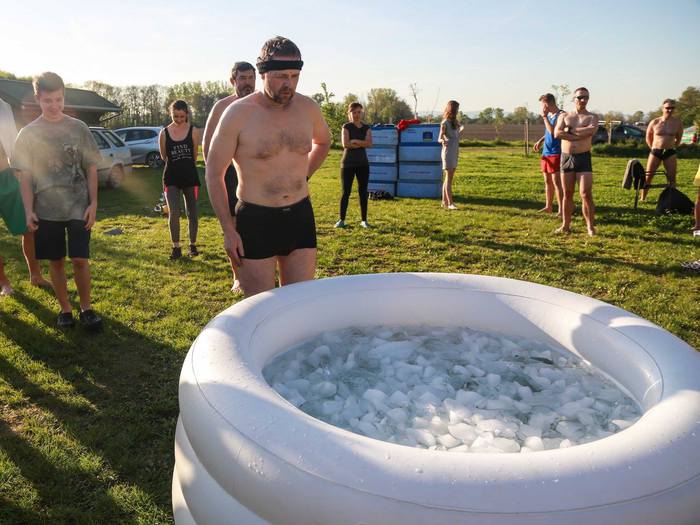
Our skin perceives a lot of stimuli such as:
- mechanical stimuli (touch, pressure, vibrations…)
- thermal (heat, cold, radiation…)
- pain
Theory claims that for 1 square cm of skin we can find:
- 2 thermal receptors
- 13 cold receptors
- 25 touch receptors
- 200 pain receptors and
- 100 free nerve endings
Based on the investigation of capability of individual sensors it has been found that:
- the cold receptors react in the range of about 10-38 °C and
- the heat receptors in the range of about 30-45 °C.
Thus, the temperature is perceived by both types of sensory organs, part of them react to a slightly higher temperatures than the normal body temperature (heat sensors), the others to temperatures somewhat lower (cold sensors). Most thermoreceptors are located around eyes, nose, lips and ears (about 20/cm2), while there are fewer on the body.
The sensory organs of temperature are located under the skin so that the temperature of the subcutaneous tissues determines the reaction to heat (when touched, metal objects are subjectively cooler than wooden objects, although the absolute temperature of both is the same, because metal dissipates heat from the skin much faster).
At a skin temperature of less than 20 ° C and above 40 ° C, adaptation to temperature change does not work properly, but in the range of 20-40 ° C the skin temperature adapts well to change, ie. that the sensations induced by increasing or decreasing temperature gradually diminish, and we do not feel them as something different.
From the point of view of body heat and cold sensors, there is no comfort and discomfort as we know it. The feeling of comfort and discomfort is consequently shaped by our brain in response to other impulses, stimuli and information it processes.
Reaction of the body to heat and cold
Why do we recoil when something is hot… or why do our hands hurt in cold water
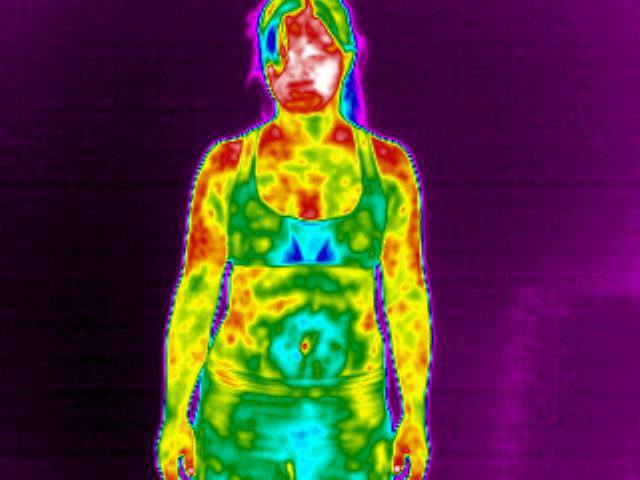
When we already know how we perceive the changes in heat, why do we recoil when something is hot, or why do our hands hurt in cold water???
It is not only about what the thermal sensors in the skin perceive, but more importantly, how our brain responds to it, how strong the impulses are for it, and how the brain can evaluate and process them, and what becomes priority for the functional centres in the brain concerning the following reaction. We must not forget that in addition to hot and cold, the skin feels more impulses which our brain then processes.
The evaluation of received impulses often has a much greater influence on the functioning of the nervous system and the reaction of the brain than we think. One of the most influential signals is the sensation of pain ……… .The feeling of “freezing” or “hot“ arises in the receptors at temperatures below 10 ° C and above 45 ° C, when the body defence system begins to work against tissue and internal structures damage and heat sensations beyond this range become painful.
In general, the sensitivity of the organism to the perceptions received exists at the cellular level (it is influenced by individual genes and proteins which are in our body) it can also be affected by training, adaptation, but to some extent also by adjusting our mind level.
Response to heat:
From the physiological point of view, it is easier for the body to handle temperatures above 40 ° C. At the point of heat, the endangered structures are protected by cooling process, the pulse is accelerated, we breathe faster, active hormones are washed out, because of the need for faster distribution of “body coolant”, we begin to sweat slowly, etc … When the temperature is more than 45°C, defence mechanisms protecting the body from damage start to work and we perceive pain more than the heat. By evaporating fluids through pores, we reduce total body temperature. The brain then emits signals to muscular structures based on received impulses and pain response – recoil, back up, change position ……… and we start moving in Fight or Flight mode.
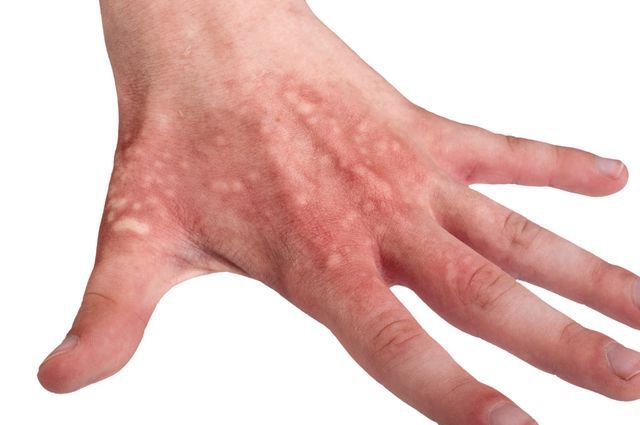
If the body fails to reduce the temperature in the endangered area early enough, changes in protein structures occur at temperatures above 44 ° C. They begin to lose their three-dimensional shape and disintegrate. This structural change results in damage to cells and skin tissues. One important function of the skin that is affected by this temperature change is its ability to prevent water loss by evaporation and control of the body temperature. Disruption of cell membranes causes cells to release potassium to the intercellular space and receive water and sodium, thereby producing blisters.
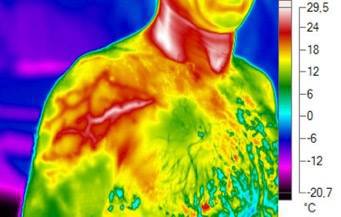
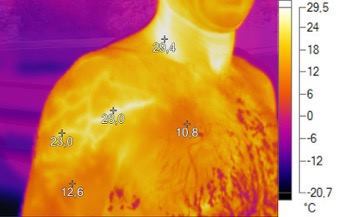
Reaction to cold:
The effect of the cold is a far more dangerous situation for the body than the heat. This is why there are also many more cold sensors than heat sensors. When the temperature is below 10 ° C, the body is mainly defended by:
- the emergence of painful impulses followed by the desire to withdraw from the cold
- changing heart rate, changing breathing rhythm
- changing behaviour of vessels, veins, arteries and other parts of the cardiovascular system
- changing the function of subcutaneous and muscular structures
- changes in biochemistry and metabolic functions of the body
- escape or panic reaction
From the physiology point of view, body temperature control happens through the thermoreceptors and a part of the central nervous system – the Hypothalamus. Hypothalamus is supplied with information from thermoreceptors (placed in the skin) for both the cold and the heat. The hypothalamus has the function of a thermoregulatory centre of the organism, it is superior to other thermoreceptors. Subsequently, stimuli are sent from the hypothalamus, which in the case of cold reactions changes muscle tone, affects the pituitary gland, subsequently the thyroid gland and other important centres.
Mechanisms which help to increase or decrease the temperature of the body, such as increasing or decreasing muscle tension, changing the blood vessel cross-section, shivering of muscles, leaking adrenaline and noradrenaline into the bloodstream, changing heart rhythm, and so on are activities which try to balance the temperature of the skin and inner body structures with optimal body temperature “set” in the thermo-regulation centre – the Hypothalamus.
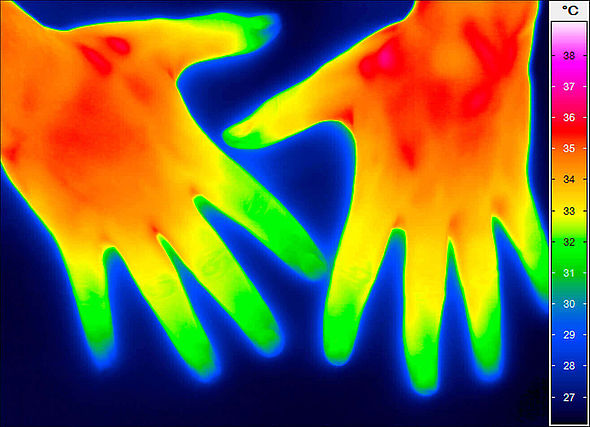
The body temperature which we measure with a thermometer is usually between 35.8 ° C and 37.3 ° C.
When, despite using the standard thermoregulation processes, the Hypothalamus is unable to maintain the range of the body temperature in the “homeostatic range”, on the surface and in the core, the body gets into hypothermia.
The body responds to the temperature in the “core of the body” below 35 ° C in several phases. These phases are referred to as mild, moderate and severe hypothermia.
The lower the blood temperature in the subcutaneous layer, in the “core of the body” and the brain is, the more intense the body reaction is.
In the individual phases of hypothermia, there are changes in the body that affect its behaviour and reactions. As the hypothermia progresses, the body seeks to reduce blood distribution towards the periphery, reduces energy and heat consuming activities, and maintains vital functions. For example, if the body temperature drops 1 – 1.5 °C from normal, the reaction time to perceived stimuli and the manual dexterity worsens.
Let us briefly describe in examples what is happening in the body during the individual phases of hypothermia.
MILD HYPOTHERMIA – “BODY CORE” TEMPERATURE IN THE RANGE OF 35.5 – 32 °C:
- the sensitivity of skin layers increases slowly and “islets of pain” are formed (e.g. when hands are immersed in ice)
- heart rate increases
- the surface of bronchi enlarges in an effort to get more oxygen in the blood and then use it to generate energy
- blood pressure is reduced to the coldest and most distant areas – especially in hands, feet, ears and nose
- contraction of muscle and subcutaneous structures in peripheral parts, limbs, increases
- the brain ceases to be able to solve more complex tasks; fatigue appears, mood worsens significantly. There are early signs of behavioural change – most often irritability. The influence of Amygdala is becoming apparent (the Amygdala plays a major role in shaping and preserving memory tracks associated with emotional experiences. It significantly affects our behaviour in fear and joy). We deal with situations and tasks more emotionally than rationally
- shivering begins to develop and biochemical processes of heat generation (shivering thermogenesis) begin
MODERATE HYPOTHERMIA – “BODY CORE” TEMPERATURES IN THE RANGE OF 32 – 28 °C:
- at first, periphery and limb parts produce strong painful stimuli in the brain
- however, with decreasing body temperature, the ability to perceive pain gradually subsides
- pupils can be significantly dilated
- shivering may become stronger, painful and sometimes we are unable to control it. Shivering limits our movement and coordination of activities
- non-shivering thermogenesis begins – increasing internal metabolism, processing nutrients in the body, producing heat inside the body
- metabolism slows down – the body turns off “unnecessary activities” like digesting food, slows down bowel activity, etc…
- there is an overall deterioration of fine motor skills and movement coordination
- contraction of blood vessels, skin and subcutaneous layers in the peripheral parts and limbs further decreases and their blood circulation gets worse
- body functions that remove heat are limited or temporarily suspended
- there are significant differences in blood temperature between the core and the periphery (limbs / fingers)
- there appears an inability to control peripherals such as fingers and subsequent joints
- the inability to coordinate short and long muscle groups increases. The ability to walk worsens.
- there may appear a brief loss of consciousness
- we lose the ability to make rational decisions, and emotions and irrational ideas begin to dominate us. The influence of Amygdala starts to prevail over the activities of the intellectual parts of the brain
SEVERE HYPOTHERMIA – “BODY CORE” TEMPERATURES LOWER THAN 28 °C:
- heart rate falls sharply and breathing activity is reduced to a minimum (we can only breathe 2-5 times per minute)
- short muscles have lost their functionality, long muscles are stiff
- we are sleepy, woozy, unable to move
- we do not perceive painful stimuli
- frostbite and structural skin changes may occur due to poor blood circulation and the effect of the cold
- there may be a long-term loss of consciousness
- heart rhythm anomalies and subsequent cardiac arrest occur and…
It is important to realize that the behaviour of our body during hypothermia and its individual defence responses do not depend strictly on the body temperature level, but above all on the ability of our body to be able to correctly evaluate and process all the incoming stimuli and signals, to be able to effectively use internal resources, manage pain, and work efficiently with increasing stress load and the ability to eliminate the so-called “signal overload” of the brain.
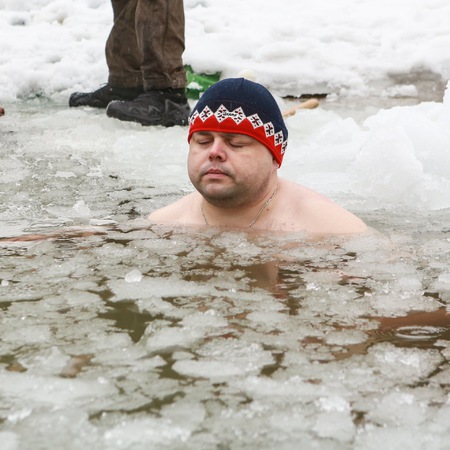
Finally, just a note for the lovers of the cold…. if we are able to properly perceive our body, we do not overestimate its abilities, we use its potential properly and keep the principles of safe stay in the cold, only then can we enjoy everything properly :).


